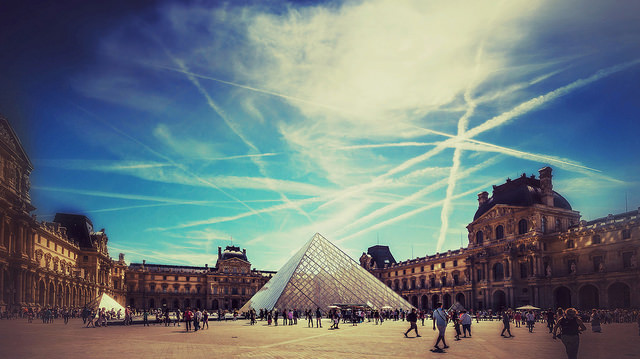In Paris, art has a name of its own. The Louvre is one of the world’s most-visited museums with 9.5 million yearly visitors, topping New York’s Metropolitan Museum. But it also does have a handicap: its colossal size makes it unmanageable. The Louvre harbors no more and no less than 35,000 works, from paintings, to sculpture and other valuable objects. So if you don’t have a lot of time to explore it, it’s best to go to the point and preselect the artworks you’d like to view.

Photo Credit: Luc Mercells
The ground floor will take you back in time, and it is also where some of its most valuable works are kept: ancient Roman, Greek, Etruscan and, of course, Egyptian artifacts. My advice is to start at the bottom, visiting the famous Venus de Milo, carved in white marble during the late Hellenistic period. The Code of Hammurabi is yet another sculpture to be viewed from all angles. This large diorite stele is one of the oldest law codes surviving today. And if you want to see Michelangelo’s legacy, don’t forget to visit his sculpture of the Dying Slave.
Walking through the Louvre is like going back to the time of our ancestors; a stroll through the centuries that can take several hours. It’s like walking the ground we had already covered; it’s the closest thing to having control over the clock, or better yet, the power to turn back the clock hands.
The first floor is dominated by Italian, English, French, and Spanish painting. It is also the place where you’ll find artworks like the Winged Victory of Samothrace, a representation of the Greek goddess Nike. The Seated Scribe, in painted limestone, is one of my personal favorites, as well as one of the best preserved pieces from ancient Egypt. This tour would not be complete without Liberty Leading the People, by the great Eugène Delacroix, a symbol of the Romanticist period, or The Wedding at Cana, in the Mannerist style. But if there’s a painting that stands above the rest, that is La Gioconda or the Mona Lisa. This artwork by Leonardo da Vinci is without a doubt the most sought after and admired piece in the Louvre; the apple of its eye; the star of the museum.
Art is perennial, it doesn’t expire or go bad; much like wine, it improves with age, multiplying in value as it grows in years. There is no ideal age for paintings or sculptures. Art is immortal, eternal, magical, sincere, and transparent. It is what it is.
The second floor is fully devoted to French, Dutch, Flemish and German painting. Some good examples are The Rape of the Sabine Women, depicting the seizing of the Sabine women by Romans, and the huge Baroque portrait of Louis XIV, the Sun King. The later reaching a height of 3 meters, a considerable size. And of course, the irresistible The Bedroom by Van Gogh.
The Louvre harbors thousands of wonders, but only a handful of them can be the chosen ones on a first visit. The good thing is that with such fairly priced apartments in Paris, you’ll be able to return as many times as you need to.

 English
English Français
Français Deutsch
Deutsch Italiano
Italiano Español
Español